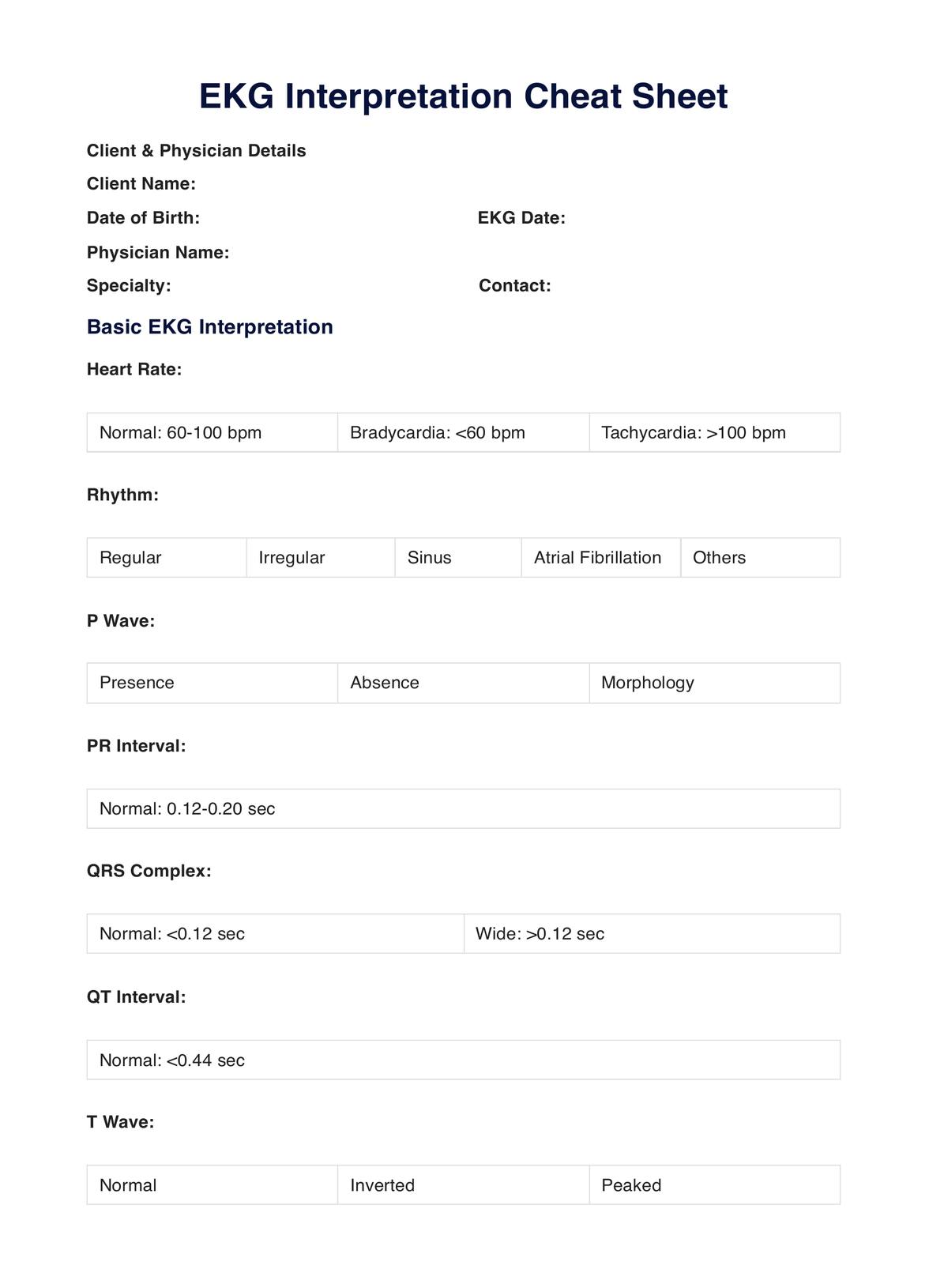Start by understanding the basic components of an EKG strip and practice identifying the rate, rhythm, and key features like P waves and QRS complexes.

EKG Interpretation Cheat Sheet
Unlock the secrets of EKG interpretation with our free cheat sheet. Master cardiac rhythms, arrhythmias, and more for better patient care. Download now.
Use Template
EKG Interpretation Cheat Sheet Template
Commonly asked questions
Regularly review EKG examples, use cheat sheets for quick reference, and engage students in simulation exercises or EKG quizzes to test your knowledge.
Basic interpretation skills enable technicians to recognize critical abnormalities and alert physicians for immediate evaluation, contributing to timely and effective patient care.
EHR and practice management software
Get started for free
*No credit card required
Free
$0/usd
Unlimited clients
Telehealth
1GB of storage
Client portal text
Automated billing and online payments











